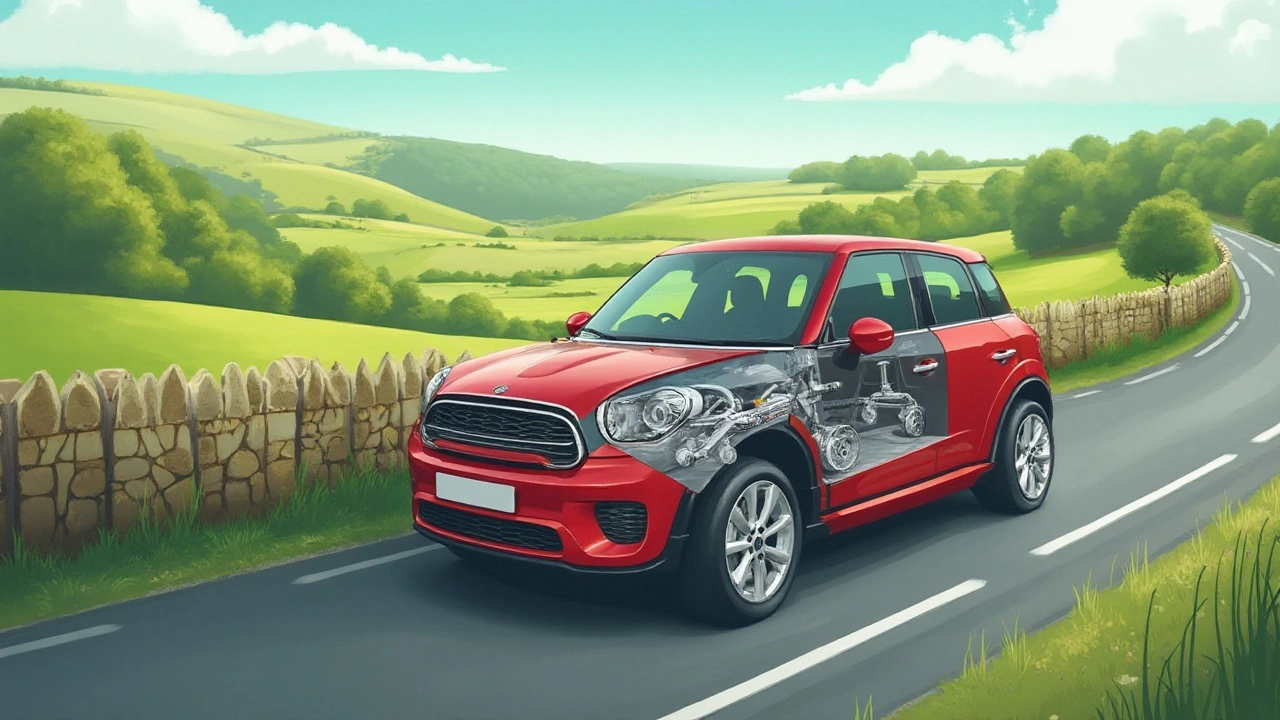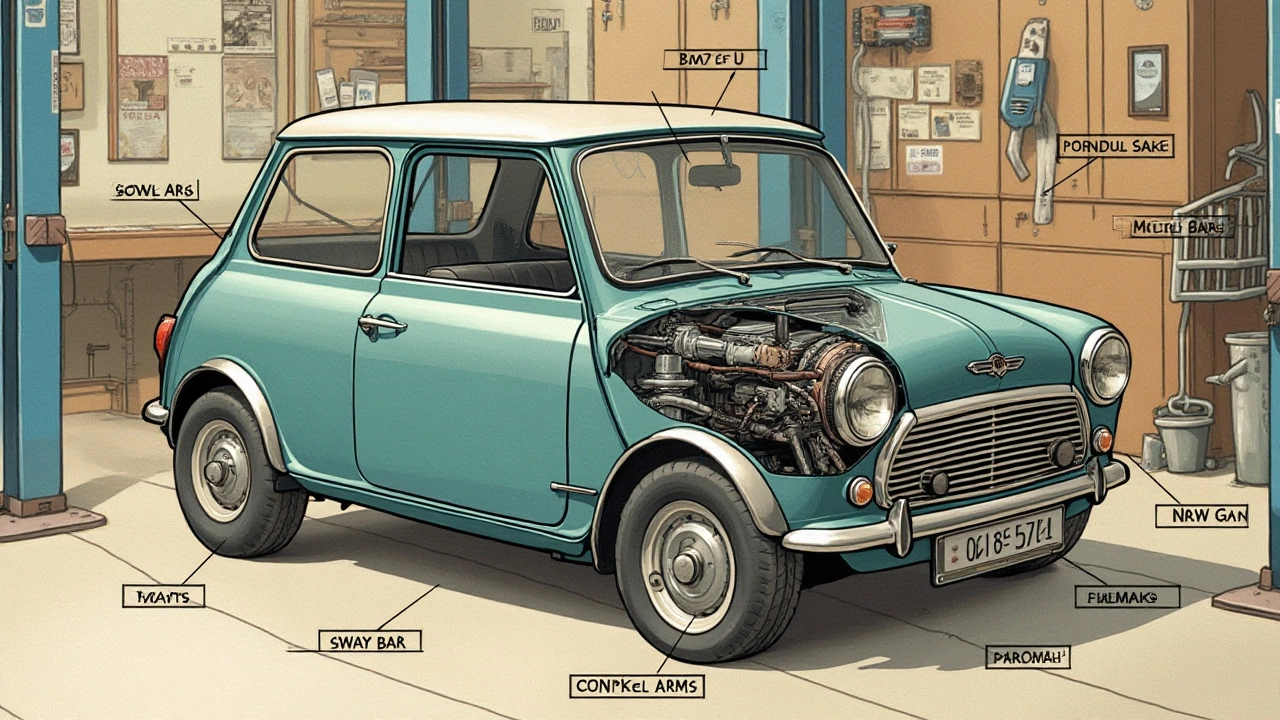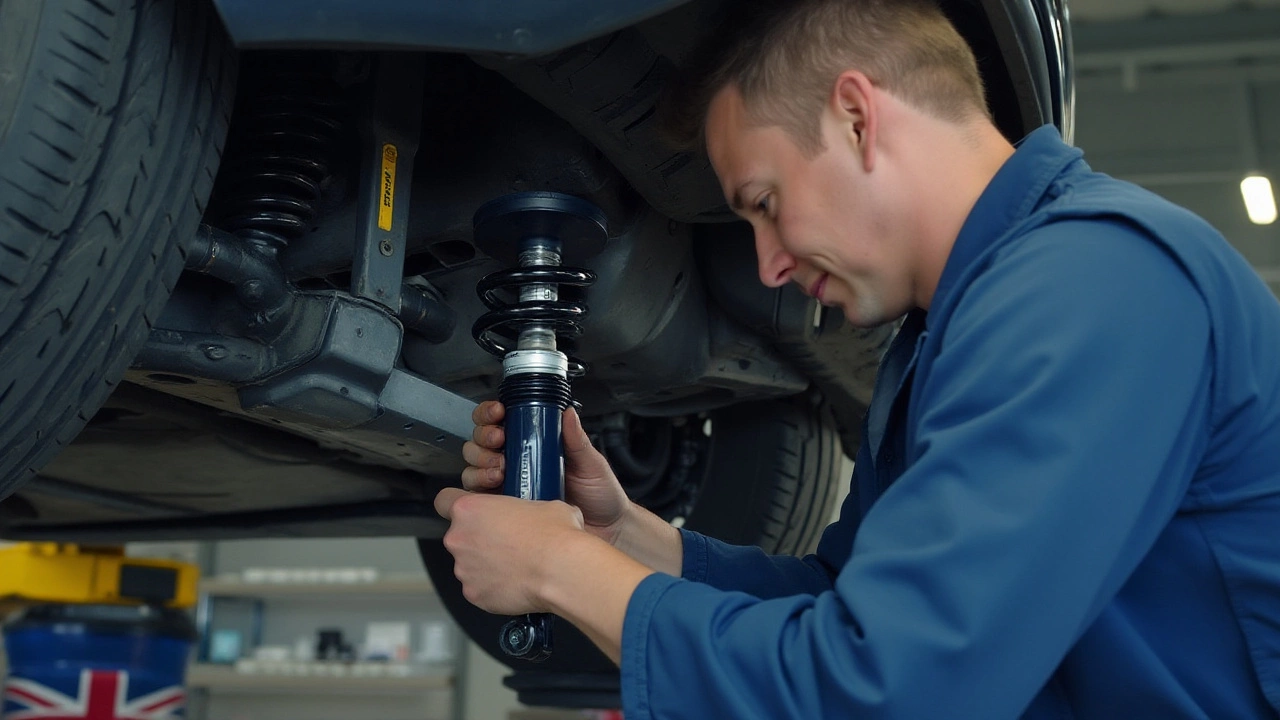Diving under the hood may seem like a daunting task, but understanding your car's suspension system can unravel mysteries. Picture the suspension system as the bridge between you and the asphalt, cushioning every bump and dip you encounter during your drive. Every turn, every speed bump, involves a careful dance of components working in harmony.
Suspension parts don't merely ensure comfort; they are key to effective handling and braking. Among these, some of the stars include shock absorbers and struts which temper the forces of the road. In this piece, we'll take a closer look at how these components come together to create a seamless driving experience. Understanding these aspects not only helps in appreciating the craftsmanship of your vehicle but also pays dividends in maintaining its performance and safety over the years.
- Introduction to Car Suspension
- Shock Absorbers and Struts Explained
- Understanding Control Arms
- The Role of Sway Bars
- Tips for Maintaining Your Suspension System
Introduction to Car Suspension
The world beneath your vehicle is a bustling ecosystem of car suspension components working tirelessly to ensure every journey is smooth. The suspension system is essentially the unsung hero of automobile engineering, quietly absorbing shocks and delivering the perfect balance between performance and comfort. At its core, the system is designed to manage dynamic forces, maintaining contact between tires and the road, a mandate crucial for safety and handling. Without these parts, every drive would be a test of endurance, navigating an unpredictable minefield of jolts and rattles.
Car suspensions are intricate networks composed of springs, dampers, and linkages, all orchestrated to reduce the impact of rough terrains. Springs, often made from coil, leaf, or torsion bars, hold the weight of the vehicle and cushion the ride over uneven surfaces. This setup is complemented by shock absorbers, which dampen spring oscillations and prevent excessive bouncing. Vehicle handling is significantly influenced by these elements, as they work together to preserve stability during cornering and braking.
Statistics indicate that well-maintained suspensions can extend tire life by up to 20%, offering substantial savings for drivers. According to an automotive study by the National Highway Traffic Safety Administration, defective suspension systems are a contributing factor in approximately 6% of all vehicle accidents. This emphasizes the system's pivotal role in road safety. As the backbone of the vehicle's architecture, suspension parts often bear the brunt of neglect in regular maintenance.
One automotive expert quite aptly put it, "A good suspension is not just a luxury, but a necessity for any car lover who values both safety and serenity on the road."
Understanding how these components interact can empower drivers to make informed decisions about repairs and upgrades, ultimately enhancing not just comfort, but safety. As you navigate through the maze of suspension technology, familiarizing yourself with its components could be a game-changer in your driving experience. Embrace the journey of discovery into how these automotive essentials make every winding road a delight rather than a daunting task.
Shock Absorbers and Struts Explained
When it comes to understanding how your vehicle glides smoothly over the pothole-ridden streets, shock absorbers and struts often take the leading roles. These components are the unsung heroes that ensure your journey isn’t a jangling fiasco. But how do they exactly achieve this? Essentially, shock absorbers, true to their name, absorb the kinetic energy that your car experiences as you hit bumps and pits. Using hydraulic fluid, they convert it to heat energy, which dissipates into the atmosphere, effectively calming the wild oscillations that springs alone cannot handle.
Struts, on the other hand, are a different beast altogether, combining the damping action of shock absorbers with the structural strength needed to support the vehicle’s weight. Strut assemblies also act as a pivot point for the steering mechanism, placing them at a crucial juncture in your car’s anatomy. They effectively eliminate the need for upper control arms and ball joints, thereby simplifying suspension design. Because of their multifaceted role, inspecting and replacing struts on time is critical to maintaining your vehicle’s handling and stability.
"The primary role of shock absorbers and struts is to maintain tire contact with the road. Without them, vehicles would be difficult to control and prone to experiencing excessive body roll during turning," says an expert from the Car Care Council.
It’s important to differentiate between shock absorbers and struts not just in terms of function but also when looking to replace or repair them. In a typical vehicle, you might find shock absorbers on the rear wheels and struts on the front. However, this isn't gold standard. Some cars might use the same component type on all four corners, underlining the need to refer to your manufacturer’s guide before heading to the repair shop. Replacement cycles for shocks and struts might vary, but usually every 50,000 to 100,000 miles is a good rule of thumb. When thinking about maintenance, remember that symptoms of wear include excessive bouncing, nosediving during braking, and a swaying sensation during sharp turns.
Why Maintenance is Paramount
Routine checks are essential to ensure the longevity and effectiveness of these components. Take note of any uneven tire wear, which could be a telltale sign that your shocks and struts are due for an inspection. In terms of cost, you’d be glad to know that regular maintenance is far more economical than waiting until a full-blown replacement is required. Be selective about where you take your vehicle to have its suspension inspected. Opt for accredited garages that use quality parts. After all, the state of your car suspension directly influences your safety and that of your passengers.

Understanding Control Arms
Control arms are an essential part of your vehicle's suspension system, acting as the pivotal connection between the car's frame and the wheels. These unsung heroes play a critical role in maintaining wheel alignment and managing how your car handles bumps and turns. Typically, each wheel has a pair of control arms – known to engineers as the upper and lower control arms. Together, they allow for vertical motion of the wheels while ensuring that the tires remain in proper steerable alignment with the vehicle's frame.
The design and functionality of control arms can differ greatly depending on the type of suspension system in your car; however, the core principles remain intact. Most modern vehicles utilize what's known as an A-arm or wishbone design, which incorporates a triangular shape that offers strength and stability. This ingenious design permits the wheel to move up and down independently resulting in a supple ride even on rugged terrains. Let's not forget the integration of ball joints and bushings within these arms – these components allow for smoother pivoting and reduce the metal-on-metal friction that could otherwise lead to wear and tear. In some models, you might find a table or chart provided by the manufacturers displaying data on control arm sizes and materials, which ensures the right fit and performance quality.
"A well-maintained control arm can significantly enhance your vehicle's agility and response times, improving not just ride comfort but overall safety," notes automotive engineer Alex Foster, highlighting the critical value these components add to a vehicle's performance.
One intriguing point about control arms lies in their variety and specialization. Luxury and high-performance vehicles might use multilink suspensions requiring multiple control arms, which further fine-tune the handling characteristics. Double wishbone suspensions are often favored in sporty cars due to their precise handling attributes, as they allow each wheel to absorb impacts without affecting the other, enhancing grip around corners.
Why should a car owner be particularly interested in this component, one might ask? The answer is clear: worn-out control arms or the bushings within them can lead to alignment issues and uneven tire wear, which could potentially escalate maintenance costs if left unchecked. You might experience clunky noises during rides or notice the vehicle pulling to one side, signs that your control arms need attention. Regular inspections can help catch these issues early on, and sometimes just replacing the bushings can revive the system's vitality. Taking these steps in maintaining such pivotal suspension parts can extend the life of your car and ensure safety for every journey.
The Role of Sway Bars
When you hit that sharp curve on your daily commute, it’s not just your hands on the wheel keeping you on track. The unsung hero of this seamless navigation is the sway bar, also known as the anti-roll bar. This crucial component of your car’s suspension system works behind the scenes to ensure maximum stability and control as you maneuver corners or avoid sudden obstacles.
The sway bar is a U-shaped metallic rod that connects the left and right sides of the car’s suspension. It helps distribute the weight load during turns, reducing body roll or tilt that could throw you off balance. Its key role is to ensure that both wheels of an axle stay level, which is critical for maintaining tire grip and improving handling. This not only enhances performance but also provides a reassuring sense of safety and comfort.
The Science Behind Sway Bars
To truly grasp the sway bar's prowess, imagine an uneven road scenario where one wheel encounters an elevation that the other doesn’t. The sway bar twists with this movement, limiting how much one side can dip or elevate relative to the other. By doing so, it imparts stability and keeps the car more level. Interestingly, the effectiveness of a sway bar can be adjusted by changing its thickness, with thicker bars providing stiffer handling and lean resistance.
Benefits of Sway Bars
Sway bars have become indispensable in modern vehicles since they provide significant benefits that go beyond the basic expectations. For example, they enhance safety by preventing excessive body roll, which can be quite dangerous, especially in higher-speed maneuvers. Additionally, by reducing the lateral movement that causes shifting inside the vehicle, they contribute immensely to passenger comfort. It is not just the driver who feels a sense of security and ease, but passengers, whether young children chauffeured by their parents or a vehicle packed with friends heading out on an adventure, also experience the difference a sway bar makes.
"A good suspension must be capable of delivering comfort without sacrificing performance," notes Jeremy Clarkson, a renowned car enthusiast, emphasizing the importance of balancing different suspension components.
Moreover, the sway bar contributes to reducing tire wear, as the balanced distribution of pressure on both sides ensures that tires last longer and perform consistently. In racing vehicles, the use of adjustable sway bars allows for a balance between speed and control, giving drivers the ability to finely tune their vehicle for different tracks and conditions.
Maintenance Tips
Like any other component, the sway bar and its associated parts, such as bushings and end-links, require regular inspection and maintenance to perform optimally. Checking for signs of wear, such as cracks in the bushings or loosened end-links, can prevent major repair work down the line. Regular maintenance avoids unexpected costs and brings peace of mind knowing that during that late-night drive across town or a thrilling trip through winding country roads, all components of your suspension, including the trusty sway bar, are operating smoothly and efficiently.

Tips for Maintaining Your Suspension System
Keeping your suspension parts in tip-top shape is essential for a smooth drive and optimal vehicle handling. Routine checks and maintenance can help extend the lifespan of these critical components. Begin by regularly inspecting your tires; their condition offers clues about the health of your suspension. Uneven tire wear often indicates alignment issues or worn-out suspension parts. Make it a habit to visually inspect the shock absorbers and struts. Look for any signs of oil leakage or physical damage. A car that seems to bounce excessively over bumps could be signaling worn shocks. Keeping an eye on the alignment is equally crucial. If your vehicle tends to drift to one side or the steering wheel vibrates, it might be time for an alignment check. Proper alignment ensures that your car handles corners and straights like a dream. Routine wheel balancing should be scheduled as unbalanced wheels can overstress your suspension.
Incorporating regular suspension checks into your car's maintenance routine can save you from hefty repair bills. Listen for unusual noises while driving – clunks or squeaks might indicate worn-out bushings or ball joints. It's also wise to check the springs for sagging or breakage. Pay attention to how your vehicle responds when steering; unresponsiveness might suggest issues with the power steering system rather than the suspension, but these systems work closely together and a problem with one can stress the other.
‘A well-maintained suspension system not only prolongs the lifespan of your vehicle but dramatically improves your driving experience,’ says automotive expert Thomas Wheelman, who stresses the importance of regular check-ups.Keeping track of mileage and following the recommended service intervals in your vehicle's manual can help you perform maintenance tasks timely. Many mechanics suggest checking the suspension every 12,000 to 15,000 miles. This can ensure consistent top performance.
Lubrication plays a vital role in prolonging the life of suspension components. Dusty or muddy environments can cause bushings to degrade faster, hence cleaning and greasing them can stave off wear. Control arms, struts, and shocks require particular attention, especially if your vehicle frequently carries heavy loads or travels over rugged terrain. When replacing parts like bushings and mounts, consider opting for quality brands to ensure durability. Aftermarket parts can sometimes offer enhanced performance, but it is important to check compatibility with your specific make and model. By being proactive and attentive to your vehicle's performance, you ensure a safer and more enjoyable driving experience for years to come.

